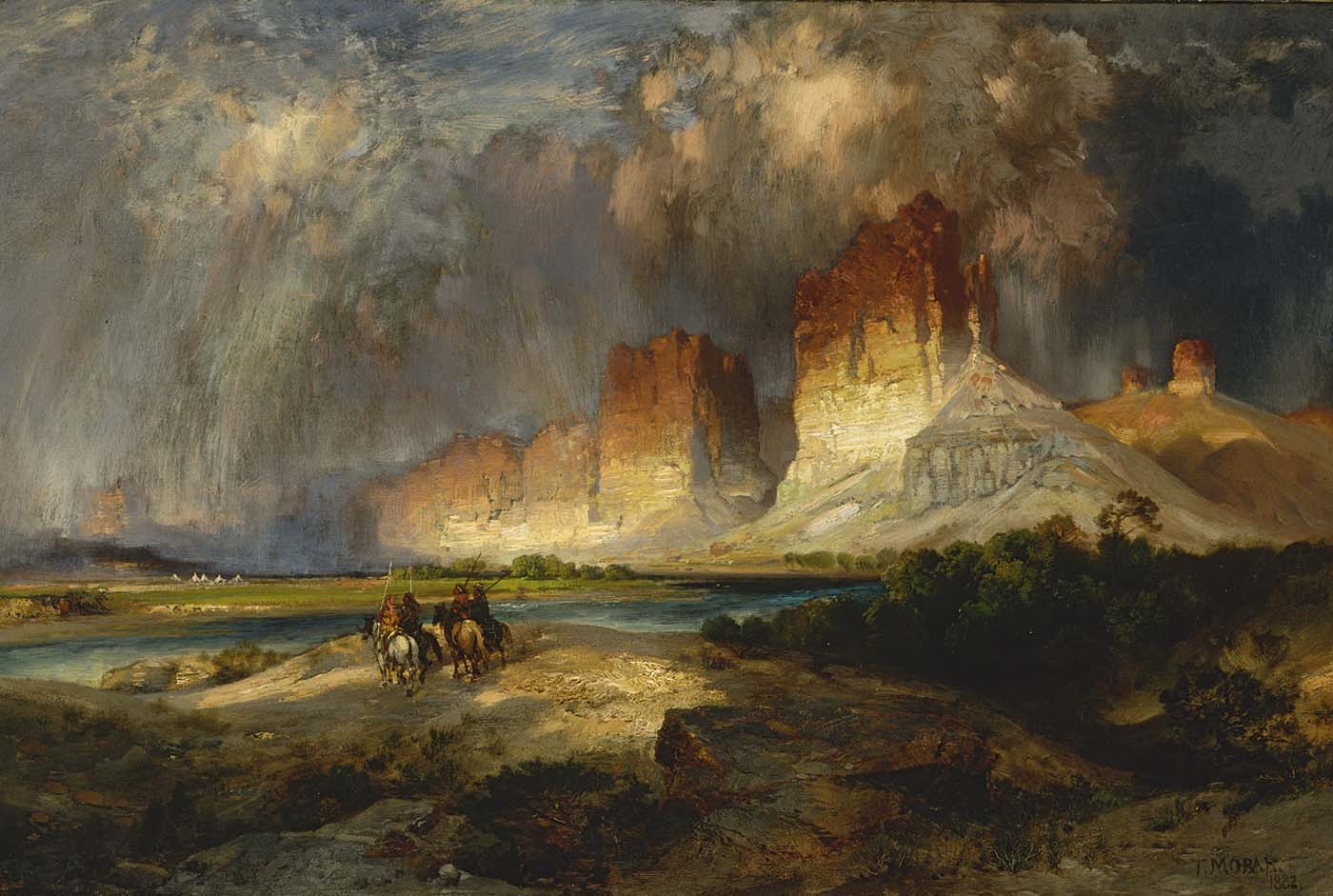Cliffs of the Upper Colorado River, Wyoming Territory

Thomas Moran knew from his first sight of the Green River (also called the Upper Colorado) that he had found an ideal theme for the East Coast art market. The town of Green River was a rowdy settlement tucked into a valley between sandstone bluffs. It had popped up overnight as the Union Pacific Railroad stretched across the continent. By 1882 the West was largely settled, but banks and laundry houses did not offer a romantic scene, so Moran painted the valley as he imagined it looked when Indians rode there. Such vividly colored western scenes proved to be a bonanza for the Union Pacific's chief rival, the Northern Pacific Railroad. Jay Cooke, the Philadelphia financier who owned the Northern Pacific, kept Moran on retainer for several years, generating nostalgic images that helped to draw thousands of greenhorns out to the farthest stops on his railroad.
Exhibition Label, Smithsonian American Art Museum, 2006
Thomas Moran made several trips to the Green River beginning in the early 1870s. This area, which is also known as the Upper Colorado, was populated by 1882 due to the construction of the Union Pacific Railroad. Moran chose to paint the river and surrounding cliffs without the houses and settlers, however, and instead painted a small group of Native Americans on horseback. The small group of people together with the dramatic thunderstorm in the background emphasizes the sheer power and scale of the wilderness landscape
- 89
- Other objects by this creator in this institution
- 303
- Objects by this creator in other institutions